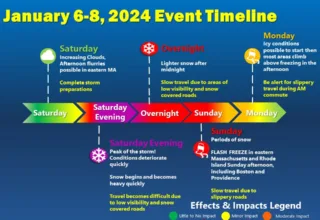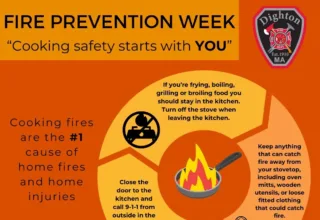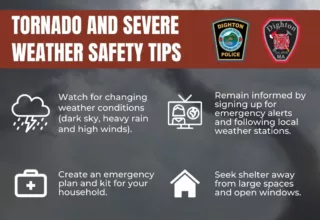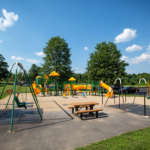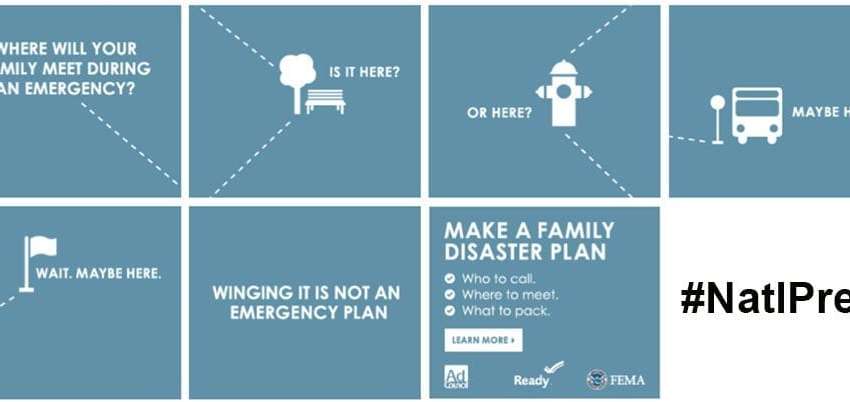
DIGHTON — Chief Christopher Maguy and the Dighton Fire Department would like to offer residents tips about making an emergency plan to prepare your family for an emergency during Emergency Preparedness Month.
September has been declared by Governor Charlie Baker to be Emergency Preparedness Month. Residents are encouraged to use resources provided by the Massachusetts Emergency Management Agency (MEMA) to prepare themselves, their family, their property and their community for an emergency or natural disaster.
Families should have an emergency plan prepared for all members of the household to know what to do, how to find each other and how to communicate during an emergency situation.
Emergency plans should include everyone in your household including individuals with access and functional needs, seniors and children. Consider familiarizing yourself with the emergency plans that are in place at your workplace, children’s school or daycare or other places where your family spends time.
“We would like to remind all residents of the importance of creating an emergency plan,” Chief Maguy said. “You can never be too prepared, and having an emergency plan that considers all family members and many possible emergency situations will help to ensure your family is safe in the aftermath of an emergency.”
MEMA offers several tips to make an emergency plan for your family:
Establish Meeting Locations and Emergency Contact Plans
- Select two family meeting locations where your family can reunite after a disaster. Choose one close to home and one farther away in case you are asked to evacuate or cannot return to the area.
- Ask an out-of-state friend or relative to serve as your family’s emergency contact. After a disaster, it may be easier to call long distance to unaffected areas.
- Provide every family member with the name, address and phone number of the emergency contact and make sure each family member has a cellphone or a prepaid phone card.
- Inform your emergency contact of any family member’s special needs or medical issues.
- List emergency contacts in cellphones as “ICE” (in case of emergency), which will make it easier for emergency management personnel to contact the right person in case an emergency responder needs to make a call on your behalf.
- Identify alternative communication methods: texting or social media can also be effective tools to let friends and family know your location and status during an emergency.
Plan How to Evacuate
- Identify and practice how you will exit your home.
- Establish possible evacuation routes to ensure you are able to get to your designated meeting location(s).
- Identify available modes of transportation. Make arrangements with family, neighbors or friends if you don’t have personal transportation.
- Review tips to safely evacuate.
Plan How to Shelter in Place
- Designate safe room(s) within your home. They should have as few windows or doors as possible and access to television, radio and telephones or cell service.
- Make sure you have necessary supplies and can access your emergency kit.
- If you receive medical treatments or home health care services, work with your medical provider to determine how to maintain care and service if you are unable to leave your home for a period of time.
- Review tips to safely shelter in place.
Practice Your Plan
- Practice your emergency plan at least two to three times a year with all members of your family.
- To practice your plan, test your emergency communications plan, assemble at your meeting locations and practice your evacuation routes. Update your plan with any changes, if necessary, after you practice.
Emergency Preparedness for Pets and Animals
- Your evacuation plan should include pets. Since you will not know how long you will be gone, you must take your pets with you.
- Be sure necessary pet supplies are included in your emergency kit. This may include: collars, leashes, harnesses, cages and/or carriers to transport and house your pets; medications and medical records; food, water and bowls; familiar items for comfort such as toys, treats or blankets; cat litter, litter pan and litter scoop; updated photo of your pet in case you are separated; and information on medical conditions, behavior problems and veterinarian contact information.
- Your plan should identify possible pet-friendly locations, including: a friend or relative’s home; temporary shelter facilities in your community; pet-friendly hotels, motels, campgrounds or boarding/kennel facilities both inside and outside your local area; or veterinarians or local animal shelters which may provide emergency shelter for pets in a disaster.
- Large animals and exotic pets may require additional preparedness steps. Consider transport, personnel and other supplies or equipment that may be needed to care for these animals.
- Make sure your pets wear collars with their current license and rabies tags. Attach your telephone number and/or the address of your evacuation site. If your pet has a microchip, be sure that the information is updated to reflect your current phone number and address.
- During or after an emergency leash your pets when they go outside and keep them close. Familiar scents and landmarks may be altered and your pet may become confused or lost.
###





